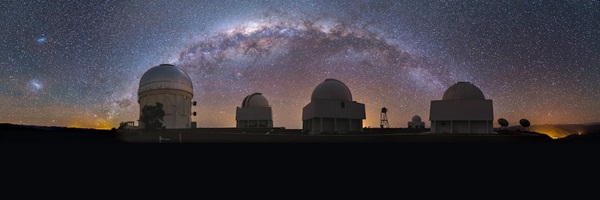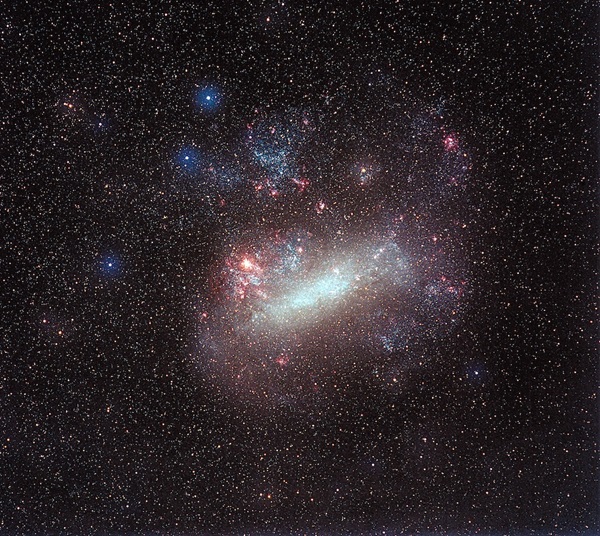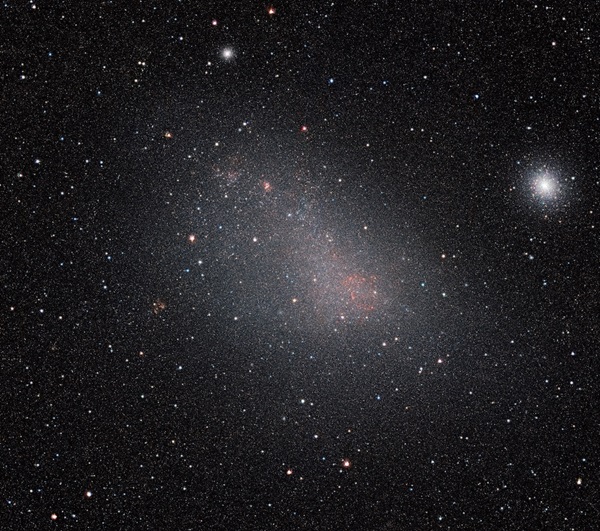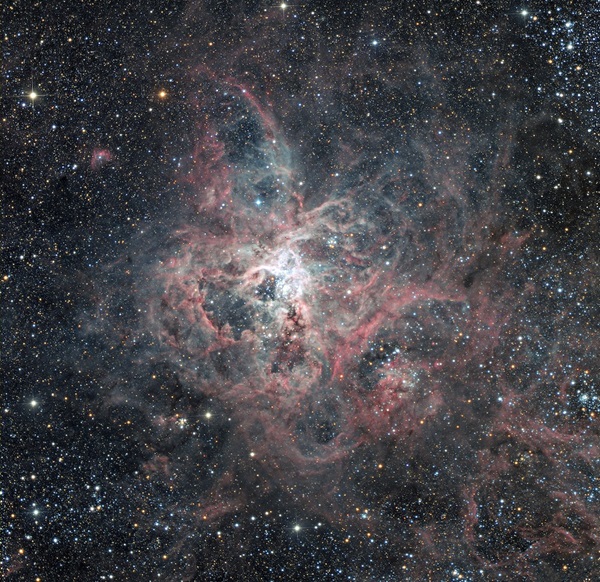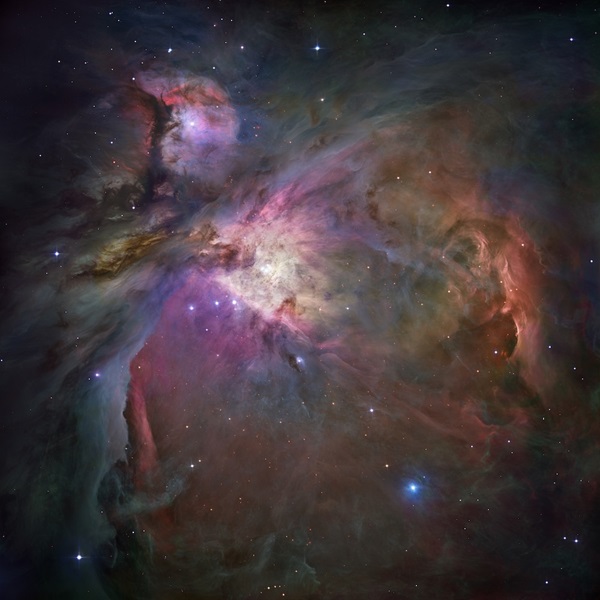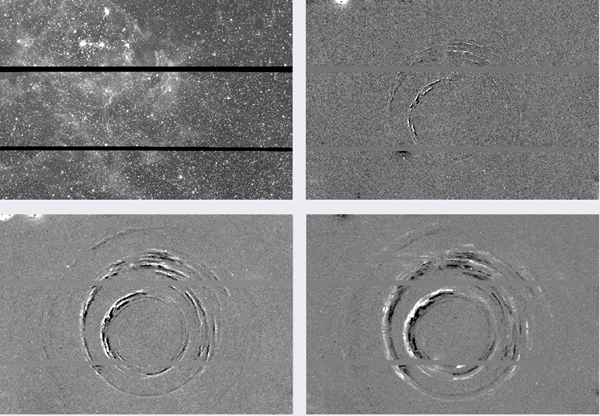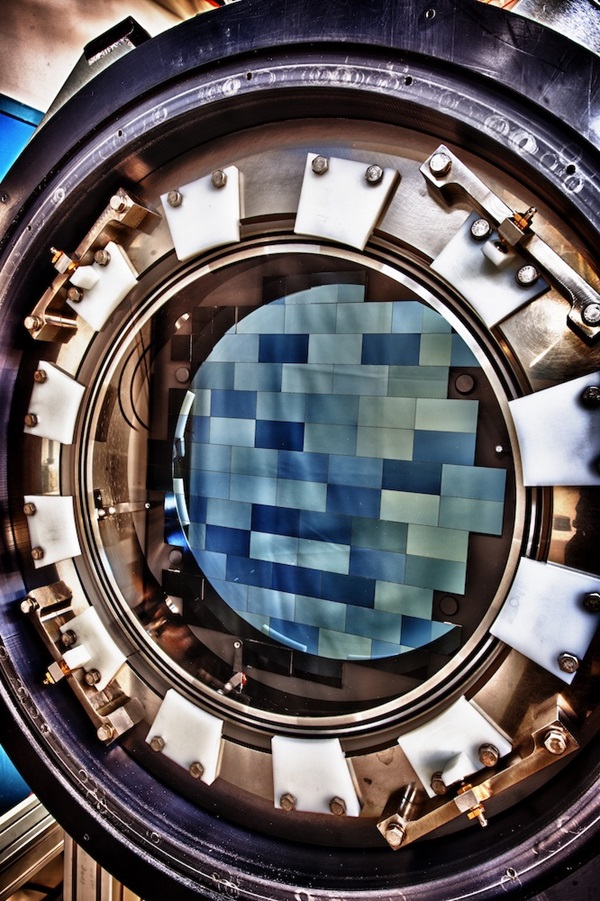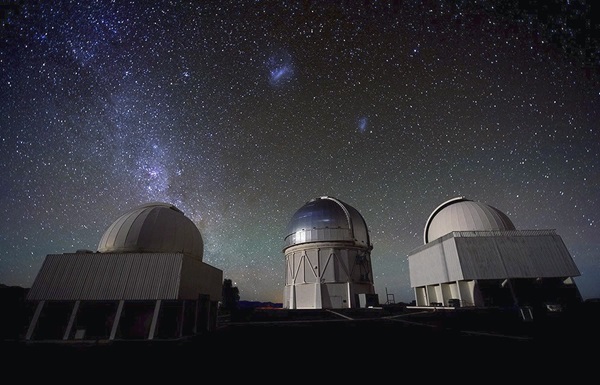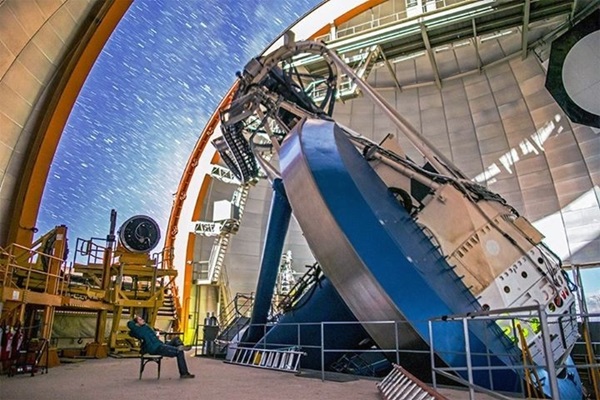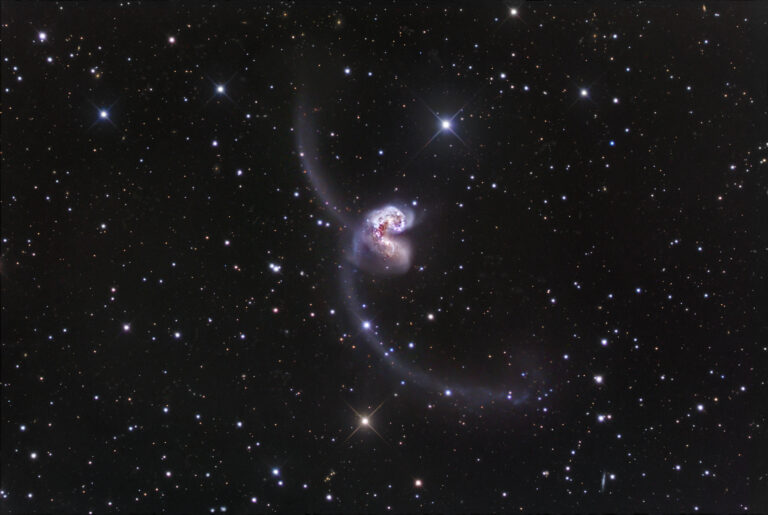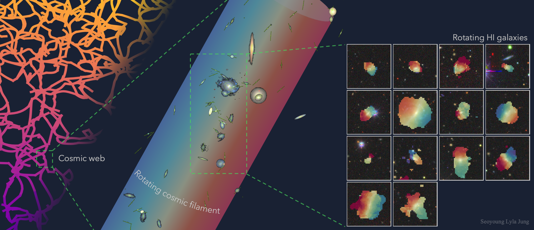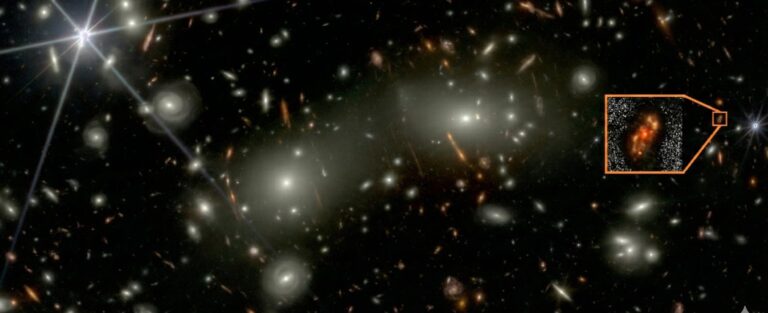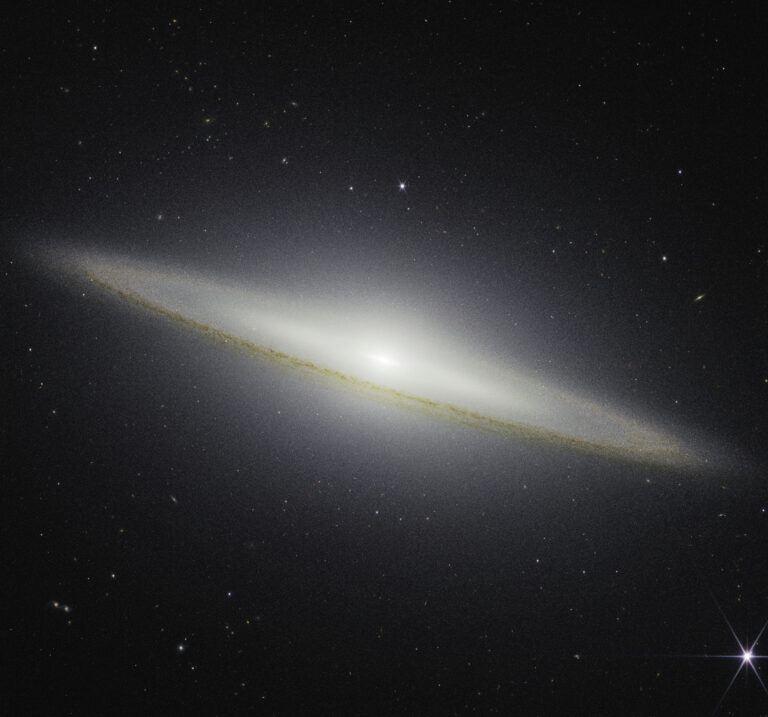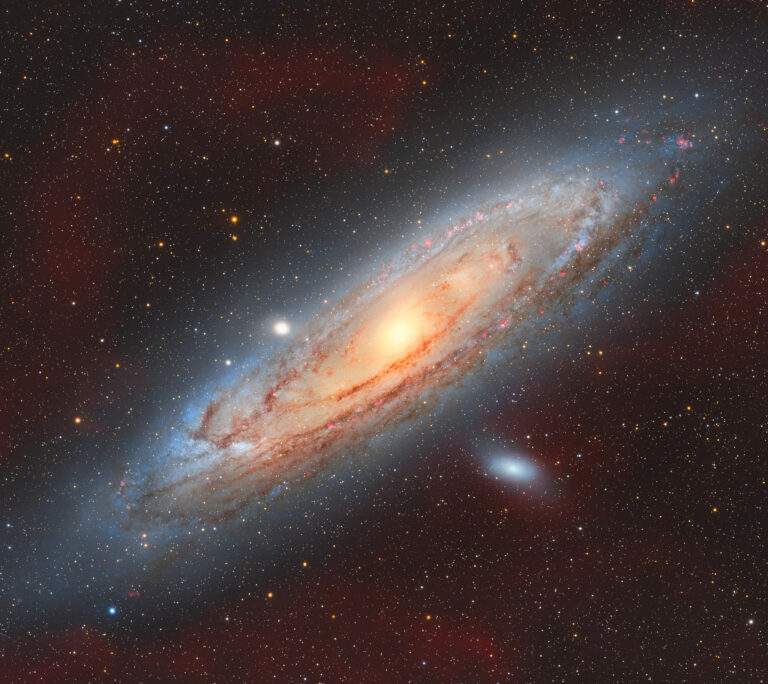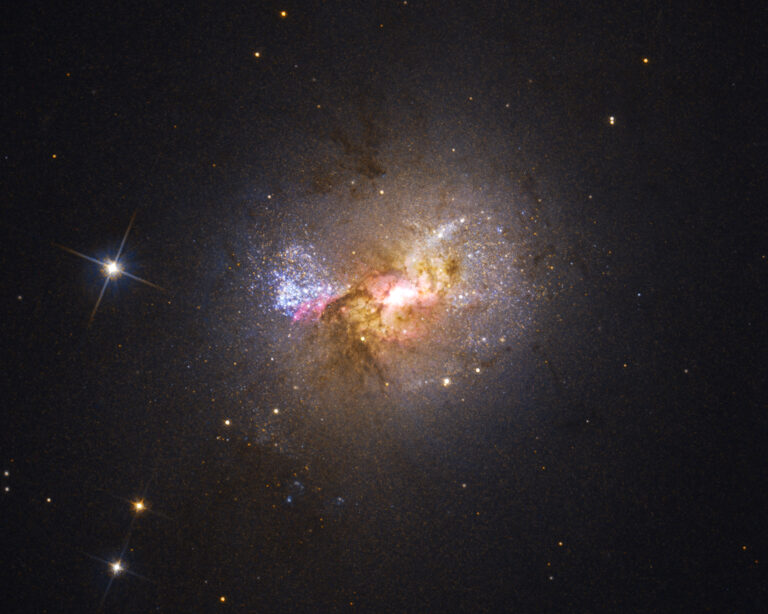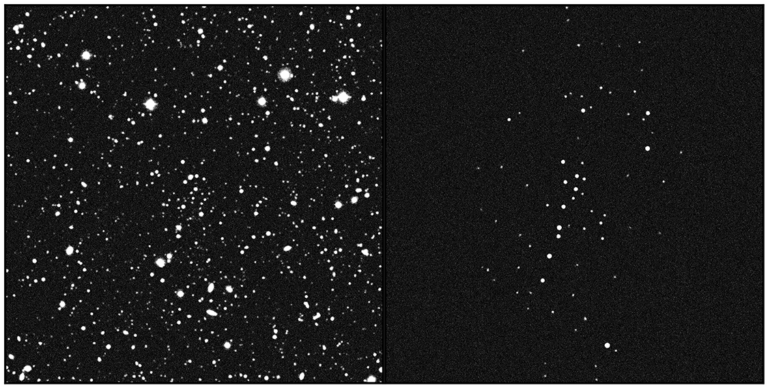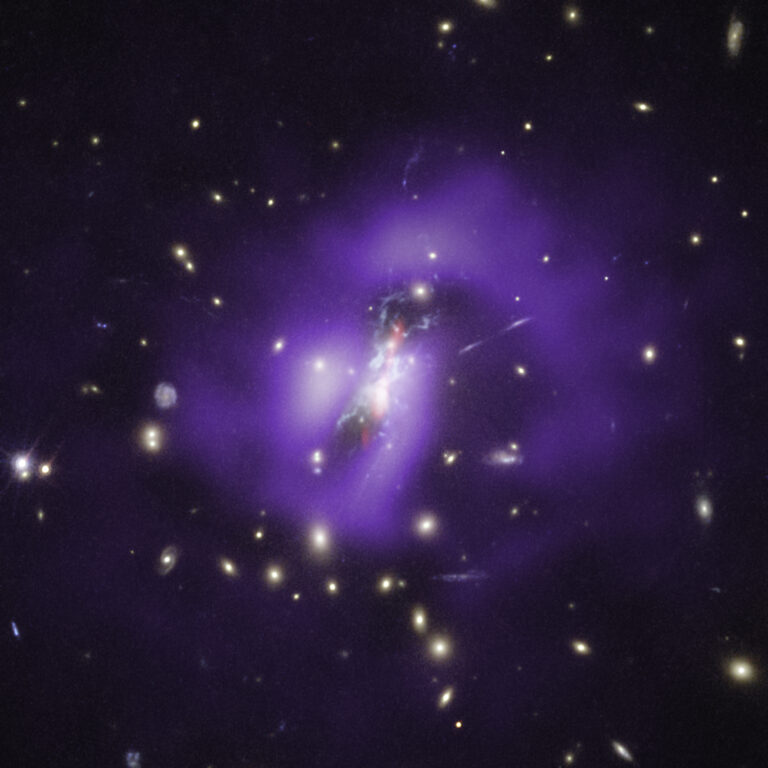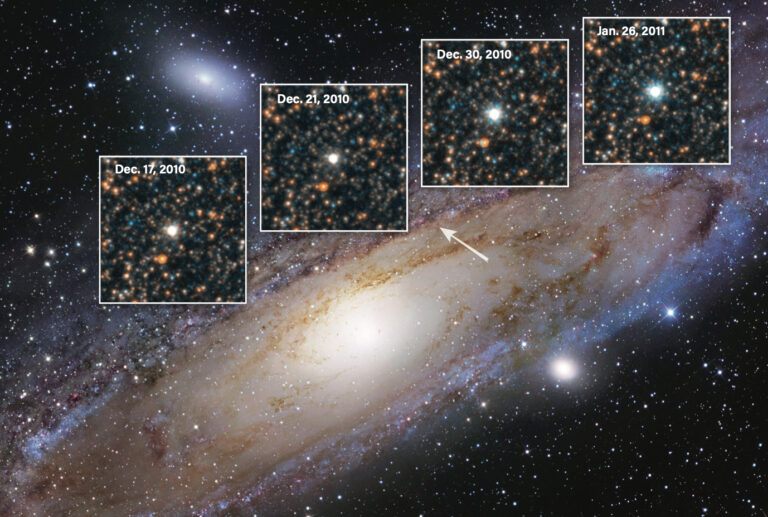Key Takeaways:
- The Magellanic Clouds (LMC and SMC), dwarf galaxies neighboring the Milky Way, are significant astronomical targets due to their proximity, enabling detailed study while still offering a uniform distance approximation for stellar analysis.
- The LMC's Tarantula Nebula (30 Doradus), the largest star-forming region in the Local Group, and the supernova SN 1987A, have contributed substantially to our understanding of stellar evolution, supernovae, and dark energy.
- Studies of red supergiants in the LMC have provided insights into stellar temperatures, radii, and the galaxy's gravitational structure, revealing a significant amount of dark matter and unexpectedly high velocities for a subset of older stars.
- Analysis of stellar velocities and abundances, combined with observations of the Magellanic Stream, suggests a history of gravitational interaction between the LMC and SMC, including stellar transfer and the impact of this interaction on star formation in 30 Doradus, and challenges to dark matter theories based on MACHOs.
The clouds are part of the culture and lore of many groups of Indigenous peoples in South America, Australia, and southern Africa, where they were named to represent things like the feathers of rheas, a South American relative of the ostrich; the tracks of celestial animals (Setlhako); a pair of cranes (Prolggi); and an old couple sitting by a campfire (Jukara). Polynesian and European sailors also used the Magellanic Clouds as celestial guides, and Europeans later named them to recognize Ferdinand Magellan’s 16th-century circumnavigation of the globe.
My Ph.D. adviser at the University of Washington, astronomer Paul Hodge, who sadly passed away late last year, had taken a boat to South Africa and spent weeks at Boyden Observatory to collect his own thesis data on the clouds. But my data had arrived on digital tapes in the mail. Moving to Chile was going to be the start of my own scientific adventure. And my personal encounter with the Magellanic Clouds surely was an unforgettable experience.
The Magellanic Clouds
Besides being spectacular nighttime objects, the Magellanic Clouds are popular targets for professional astronomers. In fact, they’ve been featured in more than 15,000 research papers, a total to which my thesis added two. There are many reasons for their popularity, including their proximity. They are as nearby as galaxies get, roughly 160,000 light-years for the LMC and some 200,000 light-years for the SMC. This means they are close enough to be studied in detail, yet far enough away that their stars can be approximated as being at uniform distances — unlike those of the Milky Way, where it can be difficult to see the forest for the trees.
The clouds also have a number of notable features, such as the LMC’s Tarantula Nebula, usually referred to as 30 Doradus, which is the largest star-forming region in our Local Group of galaxies. Northern Hemisphere astronomers are generally more familiar with the Orion Nebula (M42), a nursery for massive stars in our own galaxy. But, if placed at the distance of the Orion Nebula, 30 Doradus would span across one-fifth the sky, even casting shadows at night! At the center of 30 Doradus is a dense, massive cluster of stars called R136, which, with an age less than about 2 million years, houses stars so young that even the most massive members have yet to finish their short lives.
My journey to the clouds
Because massive stars evolve quickly and with high complexity, they challenge our ability to model and understand the physical processes that occur within them. Phil Massey is one of the prominent astronomers who have spent their careers studying them. In 2001, he was scheduled to observe the LMC’s red supergiants, which evolved from stars with masses between about 10 and 25 times the mass of the Sun, but his travel plans were interrupted by the tragedy of September 11.
I was both the local instrument scientist for the spectrograph Massey was scheduled to use and had overlapping scientific interests, so he invited me to join the project if I would collect the data. The Blanco 4-meter telescope’s Hydra-CTIO spectrograph was a finicky instrument, but it had great capabilities. It could collect light from more than 100 objects at a time using optical fibers mounted to small magnetic buttons that were precisely placed on a metal plate by a high-speed robotic arm.
From those and other spectra, Massey, along with astronomer Emily Levesque of the University of Washington, developed techniques to measure the temperatures of red supergiants, resulting in a revised temperature scale that resolved a previous disagreement with theoretical stellar models. They also identified several stars with radii of about 1,500 times that of the Sun, making them some of the largest stars known.
The pair also recently applied these techniques to observations of the red supergiant Betelgeuse, demonstrating that the star’s temperature had changed little even while it famously dimmed by more than a magnitude. They concluded that the dimming was caused by an episodic release of dust grains from the star’s atmosphere.
My own interest in red supergiants lay in using them as probes of the LMC’s gravitational structure. The spectra of the stars allowed us to measure their velocities along the line of sight. The faster the supergiants were moving, the more Doppler shifted their spectra would be. To determine their speeds, I would digitally slide each star’s spectrum over a reference spectrum for which I knew the corresponding velocity. I’d then simply measure the shift between the lines.
In the 1970s, Vera Rubin and other astronomers used similar techniques to measure the velocities of the stars orbiting in galaxies such as Andromeda and M33. They found that as they looked farther from the galactic centers, the orbital velocities were too high to be explained by just the gravitational pull from the luminous matter within the galaxies. This discovery of dark matter has since stood the test of time; it is now central to our consensus understanding that galaxies formed through the settling of ordinary matter onto concentrated dark matter halos.
The presence of dark matter means that the stars located in the outskirts of disk-shaped galaxies typically maintain constant high orbital speeds, despite the fact they are far from their galactic cores. In other words, the galaxies’ rotation curves are “flat.” And because the red supergiants located in the outskirts of the LMC fall on a flat rotation curve, they indicate the Milky Way’s largest satellite galaxy also has a significant amount of dark matter.
Dark matter leads to light echoes
Fifty years after its discovery, we still don’t know what dark matter is made of — but not for lack of trying. In the 1990s, a leading candidate for the composition of dark matter was massive compact halo objects (MACHOs): unseen black holes, neutron stars, or dim brown dwarfs.
Several groups looked for signs of such objects by observing stars in the LMC and hoping to catch the sudden brightening that would occur if a MACHO passed directly in front of it. The foreground MACHO would act as a gravitational lens, with its invisible mass bending the light rays from the background star and amplifying the light we see. (This is technically an example of a microlens, because the distorted shape of the background star would be measured in micro-arcseconds.) The result would be a predictable increase in brightness of the background star as the MACHO approached, followed by a dimming as it moved away; the whole event might last for hours, days, or weeks. Astronomers have found a few microlensing events in the LMC, and thus a potential source of dark matter, but more events are needed before definitive conclusions can be made.
Around 2005, I participated in a project led by physicist Christopher Stubbs of Harvard University and astronomer Armin Rest of the Space Telescope Science Institute, in which we observed fields in the LMC every other night. The goal was to detect brightness changes in stars that would be indicative of microlensing events. Rest developed software that subtracted every microlensed image from a previous template image, carefully tracking the offsets, distortions, and resolution of the pair. He would then identify objects that varied between the two images and trace how their brightnesses evolved over time. The team would visually scour these light curves, as well as postage stamp-sized versions of the difference images, separating true astronomical objects from image artifacts and other junk.
In late 2003, Gajus Miknaitis, then a graduate student at the University of Washington working on the project, found strange objects that he called “moving nebular ghosts.” I calculated that if these were in the LMC, they would have to be moving at the speed of light. He soon looked at the full-size difference images, rather than the postage stamp versions, and noticed that the ghosts formed concentric circles on the sky. At the center of those circles was SN 1987A.
But as Rest continued to scrutinize the observations, he started finding additional light echoes with arcs that corresponded to locations other than that of SN 1987A. These new echoes were from supernovae that had exploded in the LMC centuries ago, yet we were still seeing the original explosions in delayed form. These light echoes revealed a unique way to study supernovae long after their initial blasts. And while our project ultimately did not find compelling evidence for MACHOs as an important source of dark matter, we still found something totally unexpected — and potentially quite powerful.
Following my work analyzing red supergiants in the LMC, my colleagues and I used the Hydra-CTIO spectrograph to measure velocities of other stars in the LMC. We concentrated on stars much older than the young red supergiants to see how the passage of billions of years would affect their dynamics, and eventually gathered thousands of spectra.
After dissecting the data, we found that most of these older stars had velocities that traced the same flat rotation curve as the red supergiants; however, they also exhibited a bit more random noise, which is expected given they’ve experienced billions of years of orbital evolution. But roughly 5 to 10 percent of the total had velocities that suggest they are orbiting in the opposite direction as the rest — very strange! It would be just as weird if one of the planets in our own solar system orbited the Sun in the wrong direction.
Because we could only measure the velocity of the stars along the line of sight (motion toward or away from us), another possibility was that the stars are orbiting in the same direction as the rest but are highly inclined, traveling well above and below the disk of the LMC. We concluded this was a more likely situation, and recently confirmed it by obtaining full 3D velocities of the stars using data from the Gaia satellite. But that still didn’t explain how this small subset of oddly orbiting stars got on their current track.
Tracing stars back through time
We have known for a long time that the LMC and SMC are a pair of gravitationally interacting galaxies. The most obvious result of this interaction is the Magellanic Stream and its leading arm, which form of a twisted ribbon of neutral hydrogen gas that astronomer David Nidever of Montana State University found extends over more than half the sky.
This ribbon includes streamers that connect to both the LMC and SMC, with two of these filaments converging on 30 Doradus. Viewed from the LMC, the streamers have the same velocities as those of the strangely moving stars we had previously found. Moreover, we measured the abundance of iron in some of our weird stars, finding they had surprisingly little iron compared to other stars in the LMC. However, they were a good match for SMC stars.
Based on the streamers and seemingly migrant stars, we concluded that the LMC had stolen stars from its smaller sibling, the SMC. These displaced stars are now orbiting in front of and behind the LMC’s disk. Plus, the arms connecting the LMC and SMC were apparently ripped out along with these stars and are now falling onto the LMC’s disk, right at the location of 30 Doradus. This scenario would explain why 30 Doradus is forming stars so aggressively. The infalling material provides external pressure on 30 Doradus and keeps the stellar winds and supernovae within from completely blowing away the nearby gas, which would halt further star formation. These ripped-out, massive stars might also be the source of the microlensing events that were seen in the 1990s, which would further rule out MACHOs as a significant source of dark matter scattered throughout the Milky Way.
Such a collision would naturally explain how the LMC stripped stars and gas from the SMC, as well as how the Magellanic Stream formed. Furthermore, it predicts that stars from the clouds should have been flung far from their parent galaxies, meaning they’d now be spread out over large areas of the Southern Hemisphere’s night sky. This is why my current interest, and that of many others, is to map the sky in search of these stars.
Charting the nearby southern sky
One of the best instruments for mapping large areas of southern sky is the Dark Energy Camera, or DECam, which is also mounted on the Blanco telescope at CTIO. This instrument has a field of view 4.5 times wider than the Full Moon and was built to conduct the Dark Energy Survey (DES), which aims to measure the properties of dark energy, as well as chart the halo of the Milky Way and explore the outskirts of the Magellanic Clouds.
In 2015, two groups — one led by astrophysicist Keith Bechtol of the University of Wisconsin-Madison and the other by Sergey Koposov of Carnegie Mellon University — used the DES data to discover eight new extremely faint, low-mass dwarf galaxies. Some of these galactic specters have locations, distances, and velocities that make them likely satellites of the Magellanic Clouds — in other words, satellites of satellites.
The Survey of the MAgellanic Stellar History, or SMASH, collaboration, led by Nidever, and the DES Collaboration have also found stars from the Magellanic Clouds as far as 20° from the LMC and SMC, showing that they extend much farther than previously thought. Finally, astronomers Vasily Belokurov of the University of Cambridge and Denis Erkal of the University of Surrey have used data from the Gaia satellite to map the clouds’ stars with stunning detail. Their 2018 paper, “Clouds in arms,” shows that the SMC and LMC span roughly 15° and 30°, respectively, and they both have arms that extend far beyond that.
It has been 22 years since I first saw the Magellanic Clouds with my own eyes. Since then, I’ve learned just how closely connected they are to so many astronomical discoveries. But, even more importantly, I’ve realized they still hide many surprises.
When I gaze at them now, I imagine what they might have looked like over their lifetimes: a pair of galaxies, condensed from gas settling onto lumps of dark matter, dancing around each other while simultaneously accelerating toward the Milky Way. As they race to meet our galaxy, they occasionally slam into each other, tossing out great plumes of stars and gas both ahead of and behind them. During their tango, the pair occasionally flares up as colliding gas kicks off bursts of intense star formation. And all the while, a small audience of faint dwarf satellites sits on the periphery.
Some of this picture might be exaggerated by my imagination, but it is also almost certainly missing some fascinating details that I couldn’t yet dream of. I’ve learned that scientific research is like jumping into a canoe on an uncharted river — even with a goal in mind, you often have little idea of what lies ahead, other than almost certain adventure.

